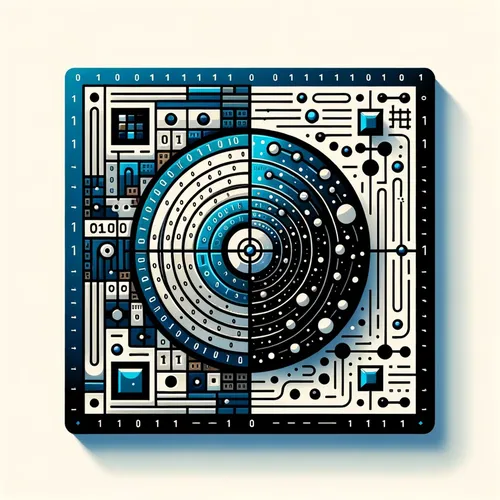Quantum Leap: ORNL, DARPA, Diraq Unveil Hybrid Breakthroughs | Quantum Bits Ep. 27
- Author
- Quiet. Please
- Published
- Fri 05 Sep 2025
- Episode Link
- https://www.spreaker.com/episode/quantum-leap-ornl-darpa-diraq-unveil-hybrid-breakthroughs-quantum-bits-ep-27--67646421
This is your Quantum Bits: Beginner's Guide podcast.
Listen close. The hum you hear—fans whirring, cooling bays pulsing—is the sound of tomorrow's quantum promise taking shape right now. My name’s Leo, that’s Learning Enhanced Operator if you want the technical bit. Today, I’m stepping into the center of one of the most dramatic shifts in computing since silicon itself entered the scene.
It’s Friday, September 5, 2025, and the last 72 hours have been electrifying—both for the headlines and for those of us living inside the quantum haze. Let’s cut straight to the chase: Oak Ridge National Laboratory just unveiled a software blueprint to unite quantum computing with high-performance classical systems. Imagine the moment when CPUs first met GPUs—exponential gains, new possibilities. ORNL’s leap is the same, but for quantum and classical hybrid workflows, promising to knock down problems that supercomputers alone can't simulate and making emerging quantum processors dramatically easier to use in real-world tasks.
But if you want real excitement, consider DARPA’s newly announced Heterogeneous Architectures for Quantum initiative. The drive? Breaking quantum’s “isolation problem” so that diverse quantum systems—trapped ions, photonics, superconducting qubits—can finally communicate and collaborate as a unified network. The goal is quantum systems that don’t just work alone, but work together, picking the perfect qubit for each computational task. Think orchestra, not solo. Proposals are pouring in as I speak; the quantum future feels closer every second.
Meanwhile, in the heart of Sydney, Diraq’s team just demonstrated cryogenic control electronics—cryo-CMOS—functioning side-by-side with silicon qubits. That’s huge. For years, scaling up quantum computers meant fighting physics itself: errors, heat, and fragility. Now, with these compact control units, we’re seeing quantum hardware that’s actually manufacturable with standard tools. Affordable, efficient quantum? You can almost hear Professor Andrew Dzurak’s excitement vibrating through each press release.
Sensory detail matters here—imagine the subzero silence in a dilution refrigerator: blue LEDs, the scent of ozone and metal, qubits flickering in quantum superposition. This is where the quantum wavefunction dances, where error correction and modular software unlock machines that actually solve the optimization, simulation, and modeling problems Fortune 500s are throwing at them. Wall Street, Amazon, drug discovery labs—quantum isn’t just theoretical anymore; it’s the engine turning industrial gears.
Technical breakthroughs have also made programming quantum computers easier than ever. ORNL’s modular framework lets developers write hybrid apps that’ll stay viable as hardware evolves. Quantum algorithms like the Variational Quantum Eigensolver are now simulating complex molecules for pharmaceuticals and materials, once out of reach for even the best classical computers.
I love seeing quantum parallels in the everyday. Just as diverse global teams race to optimize supply chains and weather prediction in real time, we’re racing to interconnect quantum “species,” expanding collective power. Maybe tomorrow’s computer will resemble the chaotic, cooperative beauty of the nitrogen cycle itself—multiple agents working seamlessly, the sum greater than each solitary part.
If you’re curious, if you want quantum decoded for real people, this is the space. Quantum Bits: Beginner’s Guide isn’t just a podcast—it’s your portal into the moment when physics, engineering and imagination collide.
Thanks for listening, for questioning, for being brave enough to wonder. I’m Leo, always eager for your questions or your topic requests—just send me an email at [email protected]. Remember to subscribe, and if you want more from Quiet Please Productions, check...
